Front Porch Planter Ideas – Create the Perfect Aesthetic for Any Home Style
Would you like make your home look super inviting? Think about your front porch. It’s the first thing people see. And adding some colorful plants there makes a huge difference. It’s like giving your house a little hug. Front porch planters are perfect for this. They boost curb appeal instantly.
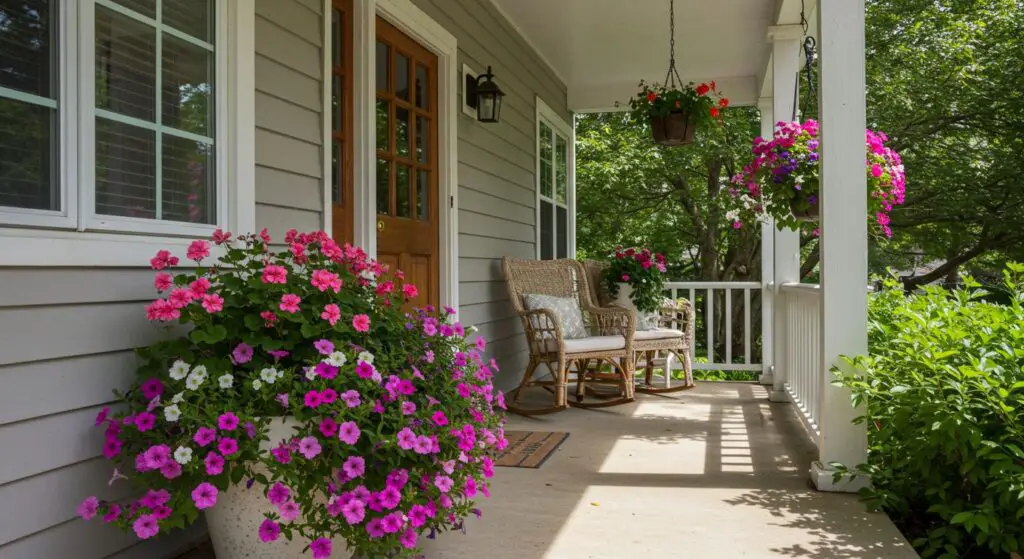
Planters create a warm welcome for anyone walking up to your door. They add life and color right where you need it. But they aren’t just pretty. Planters are flexible. You can change them with the seasons. Swap out flowers as the weather changes. You can also pick plants that love sun or prefer shade. Whatever your style, there’s a planter for you.
Welcoming Entrances with Front Porch Planters
Your front entrance is important. It sets the mood for your home. A nice entrance feels friendly. It makes people feel good before they even step inside. That visual welcome is powerful.
Adding plants makes your entrance much more appealing. It shows you care about your space. And it totally upgrades the overall look of your house. Planters are simple things that have a big impact.
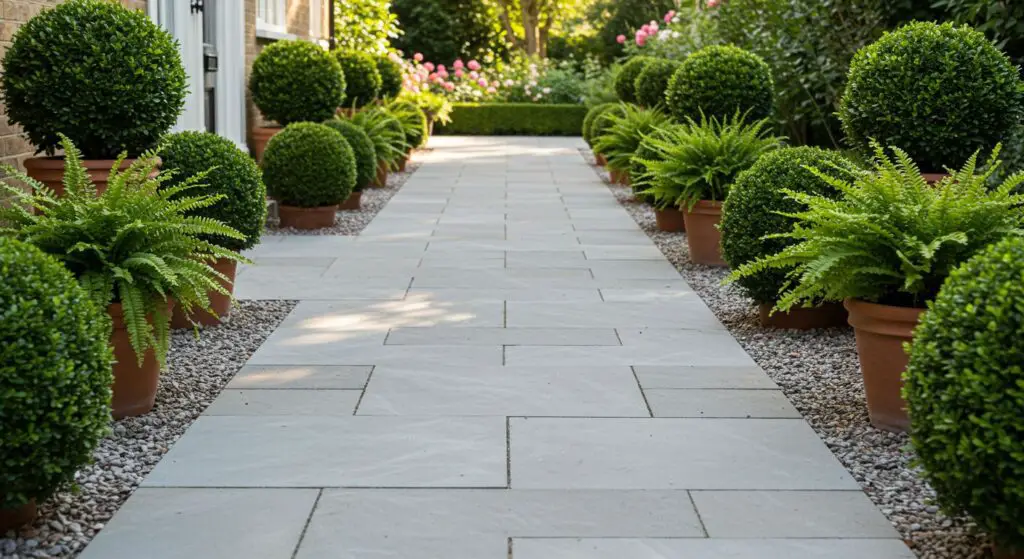
Front Porch Planters Entrance Ideas
How can you make your entrance extra special with planters? There are easy ways. Symmetry is a classic trick. Place matching planters on either side of your steps. Or put them next to the front door itself. It looks balanced and tidy.
And try layering heights. Don’t use pots all the same size. Mix tall ones with shorter ones. Use plants that grow upright and others that trail down. This creates visual interest. It makes your display dynamic. Think about coordinating themes too. If your house is modern, use sleek, simple pots. If it’s more traditional, maybe go for something classic. Make sure the planters match your home’s style.

Choosing the Right Planters for Your Porch
Picking the right pots matters just as much as picking the plants. The pot needs to fit your style. It also needs to work for the plants you want to grow. Plus, it should be sturdy enough to handle the weather. Think about size. How much space do you have? Don’t block your walkway.
Consider the material. Different materials look different. They also hold water differently. Some are heavy. Some are light. Choose something that fits your porch and your gardening style.
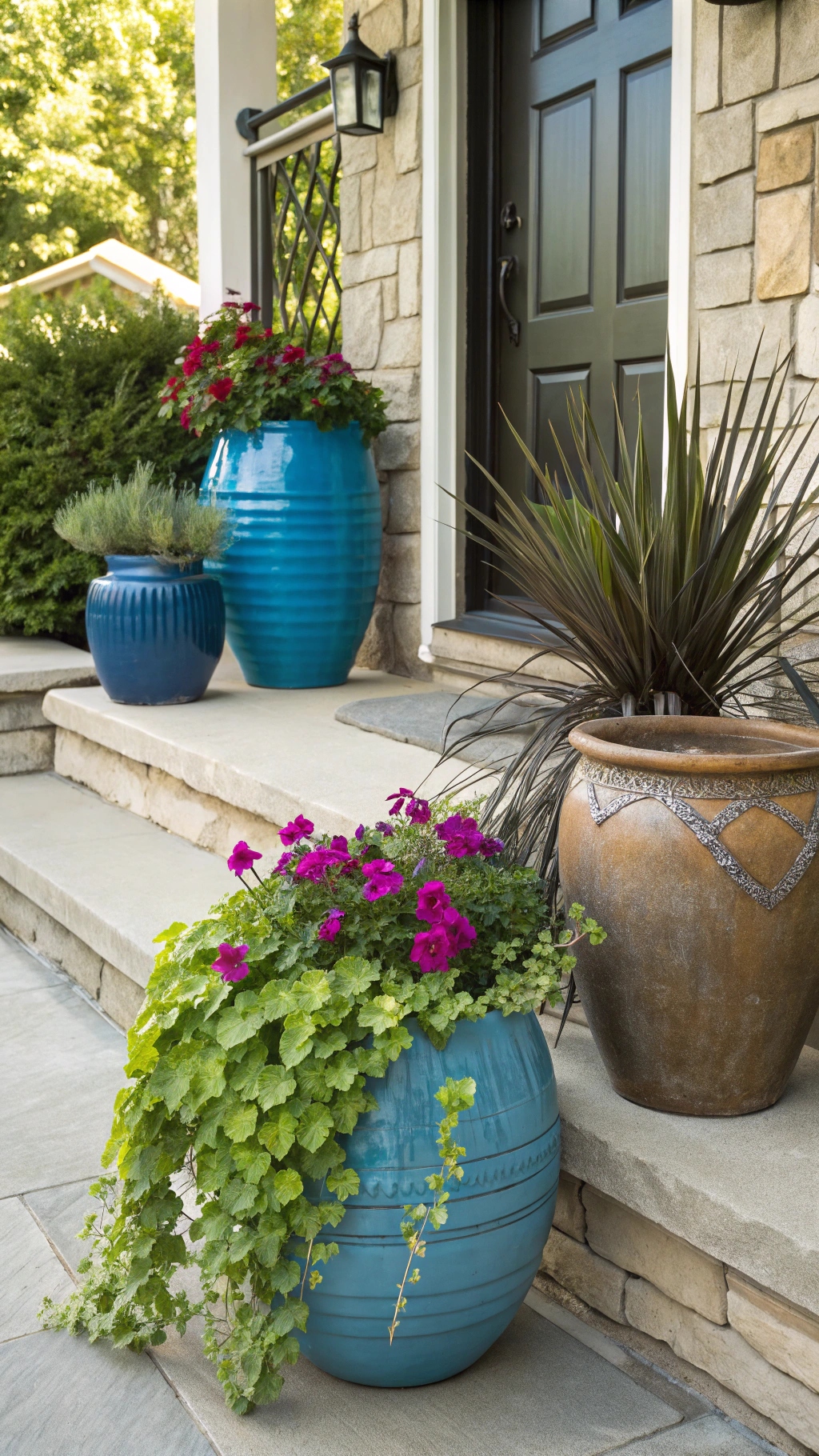
Types of Planters
There are so many choices when it comes to planter types. Classic ceramic and terracotta pots are popular for a reason. They look timeless. Terracotta is porous, meaning it breathes. This is good for roots, but it also dries out faster. Ceramic pots hold moisture better.
Modern metal and concrete containers offer a different look. Metal pots can get hot in the sun. Concrete is heavy and durable. It gives a clean, contemporary feel. Looking for something unique? Try eco-friendly recycled and reclaimed materials. Old wooden crates, metal tubs, or even tires can become cool planters. Make sure they have drainage holes.
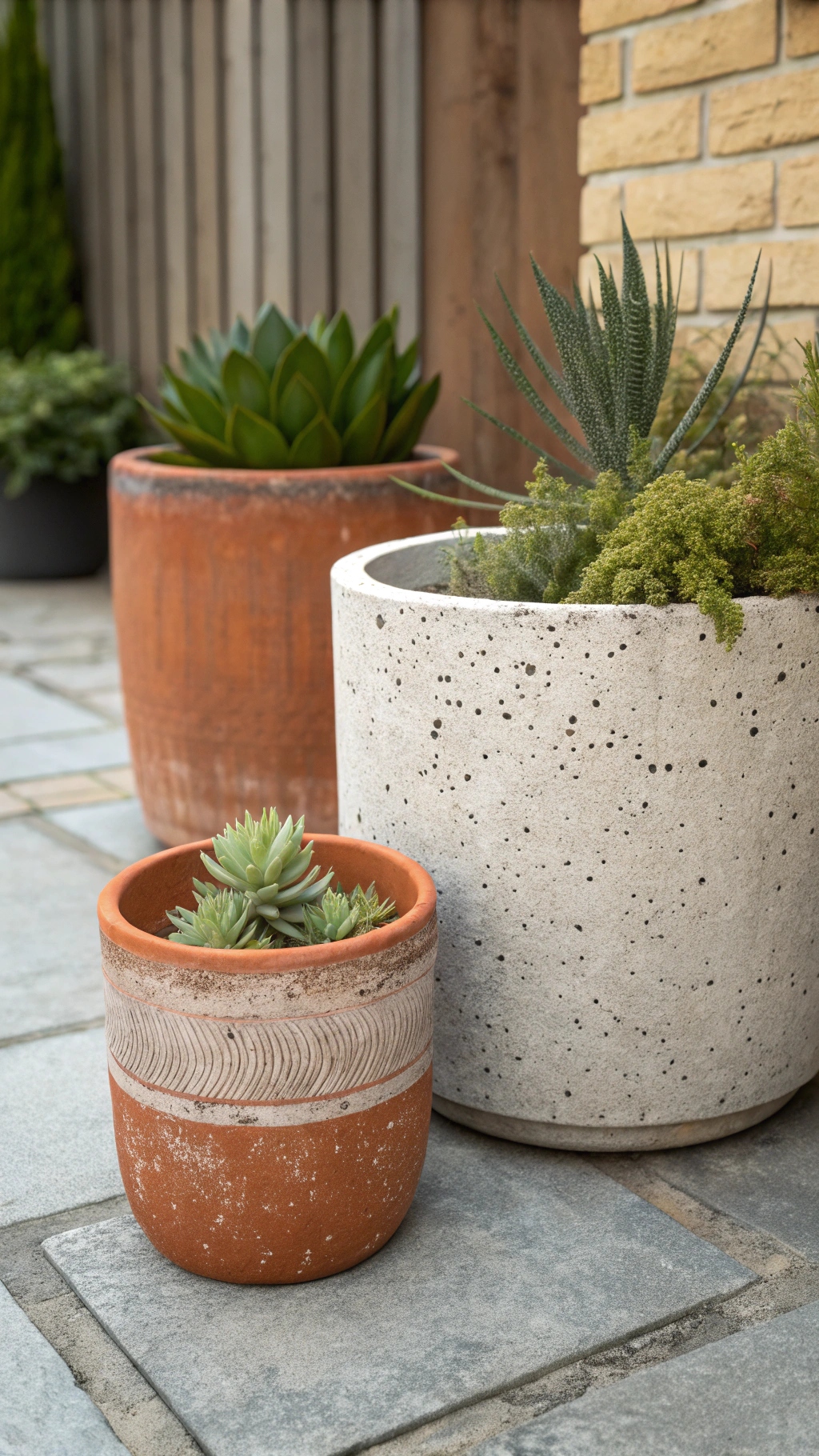
Front Porch Planter Boxes
Front porch planter boxes are really handy. They are usually rectangular or square. You can place them on railings. Or put them right on the porch floor. They are easy to use, especially if you have limited space. They give plants plenty of room for roots to grow. And they can be quite durable.
What grows well in a box? Lots of things! Flowers look amazing spilling over the sides. Think petunias, impatiens, or calibrachoa. Trailing plants are perfect for this cascading effect. Ivy or sweet potato vine work nicely. You can also use evergreens for structure and winter interest. Small boxwoods or dwarf conifers stay green all year.
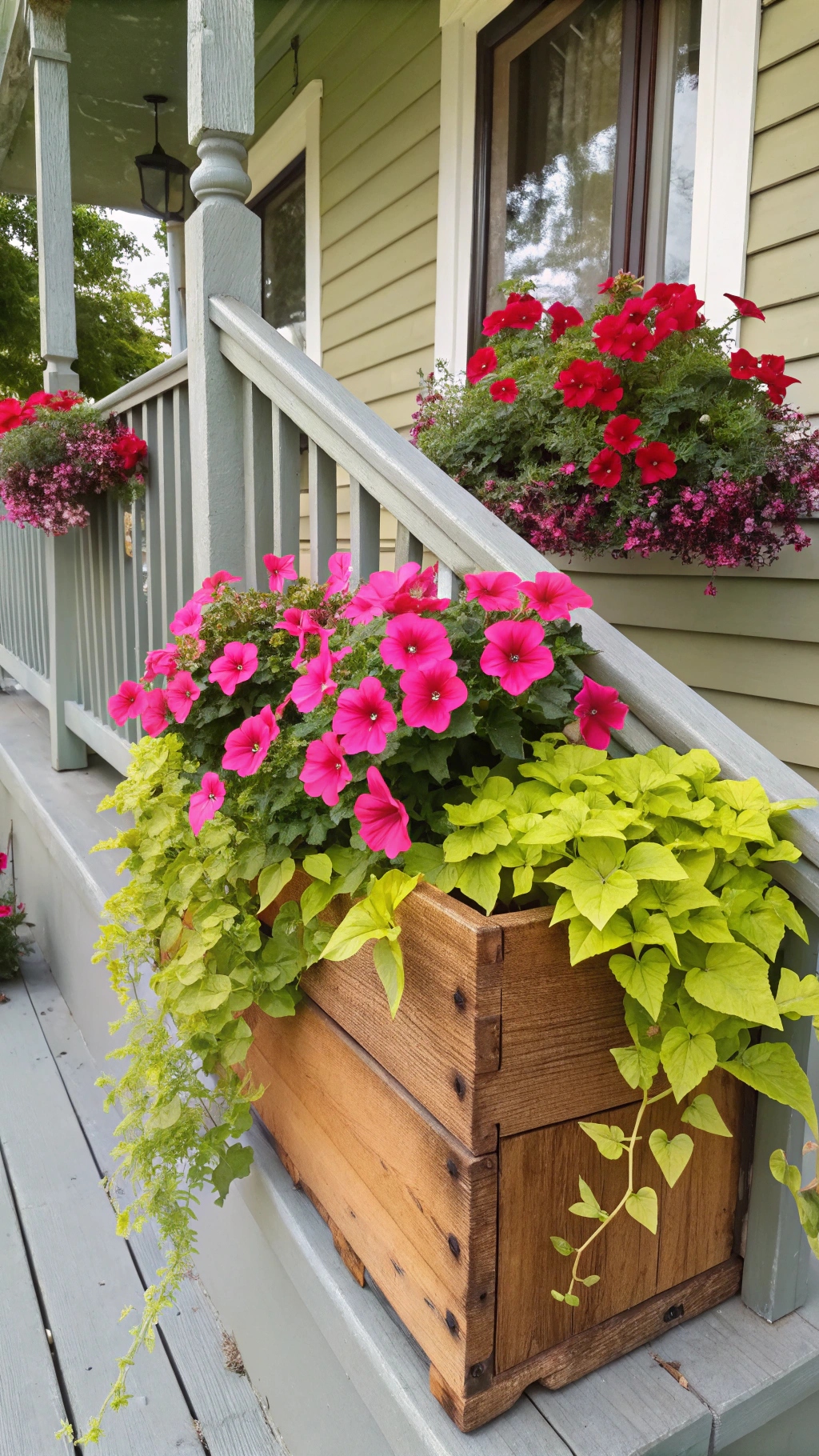
Seasonal Front Porch Planter Ideas – Embracing Spring
Winter can feel long. Your porch might look a little bare. But then spring comes! It’s time to bring back the color and life. You want your porch planters to feel fresh and vibrant again. Transitioning them is fun.
It means saying goodbye to winter greens. Or perhaps just adding to them. You swap out the tired plants. Then you fill your pots with the happy signs of spring. It gets your porch ready for warmer days ahead. And it makes your home feel welcoming after the cold.
Picture this: A dusting of late snow melts off a porch, revealing planters ready to be filled with new life.
Front Porch Planters Spring Ideas
Spring offers so many pretty options. It’s a season of new beginnings in the garden. Your pots can show that. Think about bright colors and cheerful shapes. It’s a time to have fun with your plant choices.
What works well? Blooming bulbs are a must for early spring. Tulips push up first. Daffodils follow with sunny yellow faces. Hyacinths add amazing fragrance. Plant these in the fall for a spring show. Or buy potted ones already in bloom. They give instant color.
And don’t forget cheerful annuals. Pansies are tough little flowers. They can handle cooler spring temps. Petunias come in tons of colors and trail nicely. Marigolds bring bright oranges and yellows later in spring. Mix them up for a riot of color.
Want to try a DIY spring planter combination? Grab a medium-sized pot. Put some gravel or broken pottery in the bottom for drainage. Add potting mix. Pop in a dwarf evergreen in the center for height. Surround it with colorful pansies or violas. Add a few daffodil bulbs tucked around the edges. Water well. This gives structure and lots of early color. It’s a simple recipe that looks great.

Front Porch Planters for Different Sun Conditions
Not all porches get the same amount of sun. Some are sunny all day. Others are shady almost all the time. And some get sun for just a few hours. You need to pick plants that like the light your porch gets. It’s super important for keeping them healthy. Plants need the right light to thrive.
Putting a shade-loving plant in full sun is a recipe for disaster. It will get scorched. A sun-lover in deep shade won’t bloom well. It might get leggy. Pay attention to where the sun hits your porch. Then choose your plants accordingly. It makes gardening much easier.
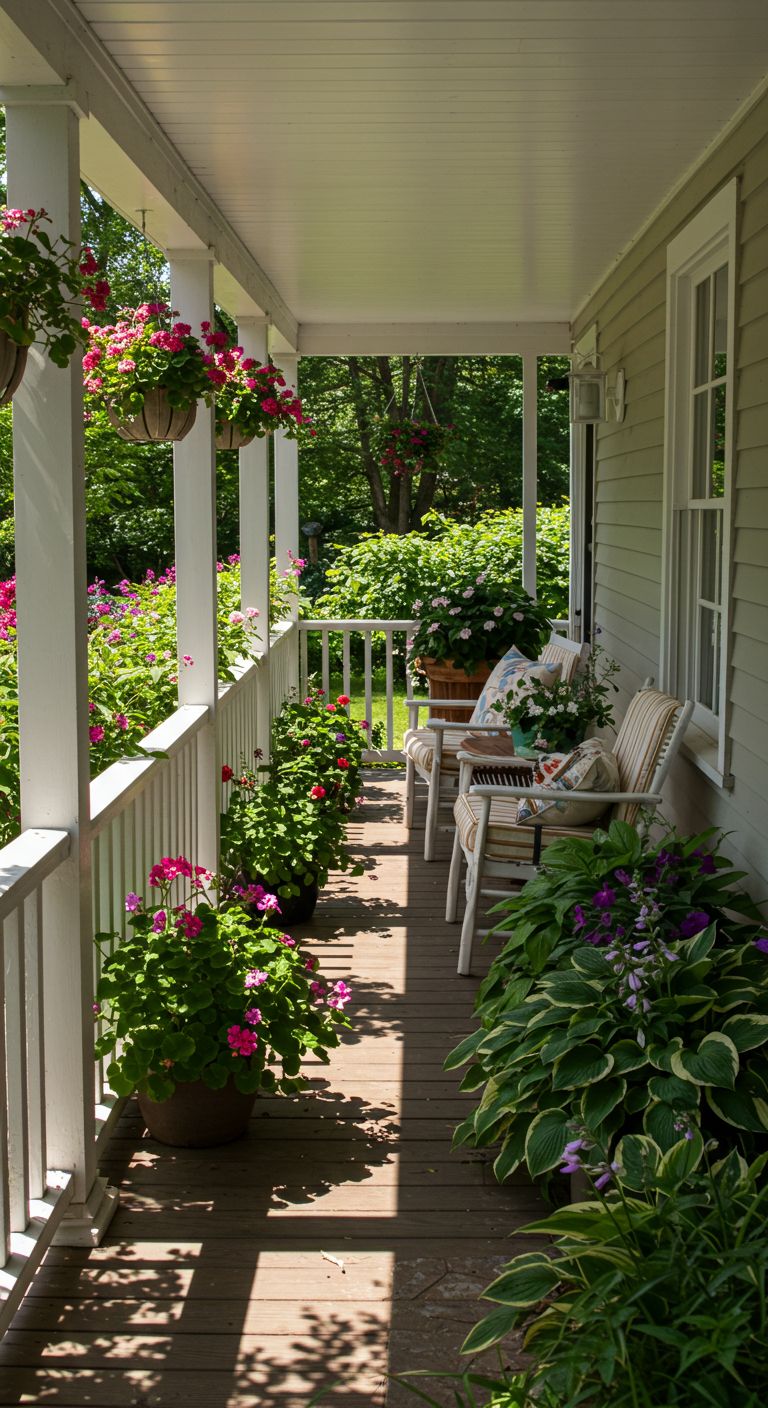
Full Sun Front Porch Planters
Got a porch that bakes in the sun for six hours or more daily? That’s full sun. Many plants love this heat and light. You have lots of options for vibrant, long-blooming flowers. They soak up all that energy.
Geraniums are a classic choice. They come in red, pink, white, and coral. They bloom non-stop if you water them. Lavender is another great option. It smells wonderful. It attracts bees and butterflies. It also doesn’t need a ton of water once established. Ornamental grasses add texture and movement. They are generally very low-maintenance in full sun.
Remember to water frequently. Pots in full sun dry out fast. Check them daily, especially in hot weather. Use a good quality potting mix that holds some moisture but drains well. Mulch on top can help keep the soil from drying out too quickly.
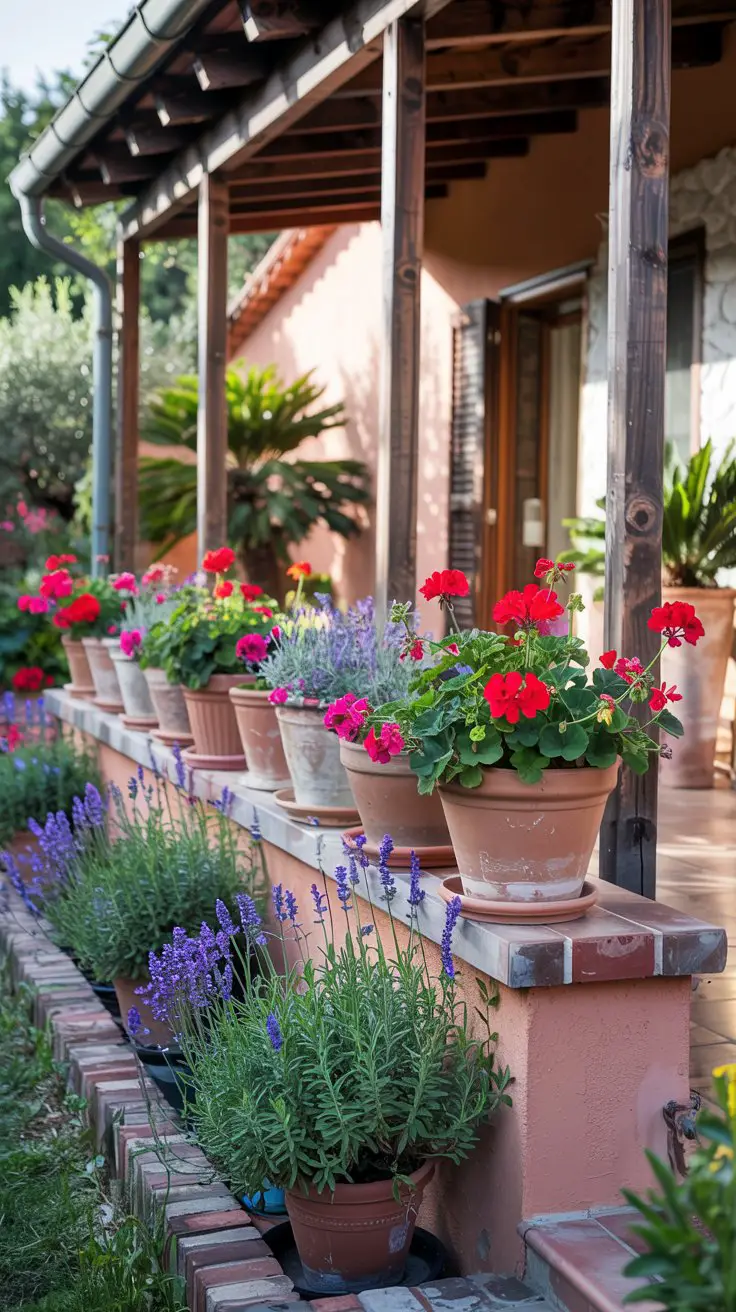
Shade Front Porch Planters
Does your porch get less than four hours of direct sun? Or maybe it gets dappled light? That’s a shade porch. Don’t worry, you can still have beautiful planters! Many gorgeous plants prefer protection from harsh sun. They often have lush foliage.
Hostas are famous for shady spots. They come in many leaf shapes, sizes, and colors – greens, blues, yellows, and variegated patterns. They add structure. Impatiens are workhorses for shade color. They bloom in shades of pink, red, orange, white, and purple. They are perfect for hanging baskets or filling pots. Ferns bring delicate texture and a cool, woodland feel. Many varieties do well in containers.
Managing moisture is key in shade. Soil in shady pots can stay wet longer. Use potting mix designed for containers. Make sure your pots have good drainage holes. Don’t let the pots sit in saucers full of water. Overwatering is a common issue in shade. But they still need water, especially when it’s dry out. Check the soil moisture with your finger before watering.

Styling and Decorating Tips for Front Porch Planters
Having healthy plants is wonderful. But you can do even more to make your front porch planters look amazing. It’s about styling them. Think of it like decorating any other space. You want everything to look good together. Planters are great decor pieces on their own.
They add height and shape. They bring color and texture. But you can enhance their look. You can make them fit your porch style even better. A little extra touch goes a long way. It makes the whole entrance feel more polished.
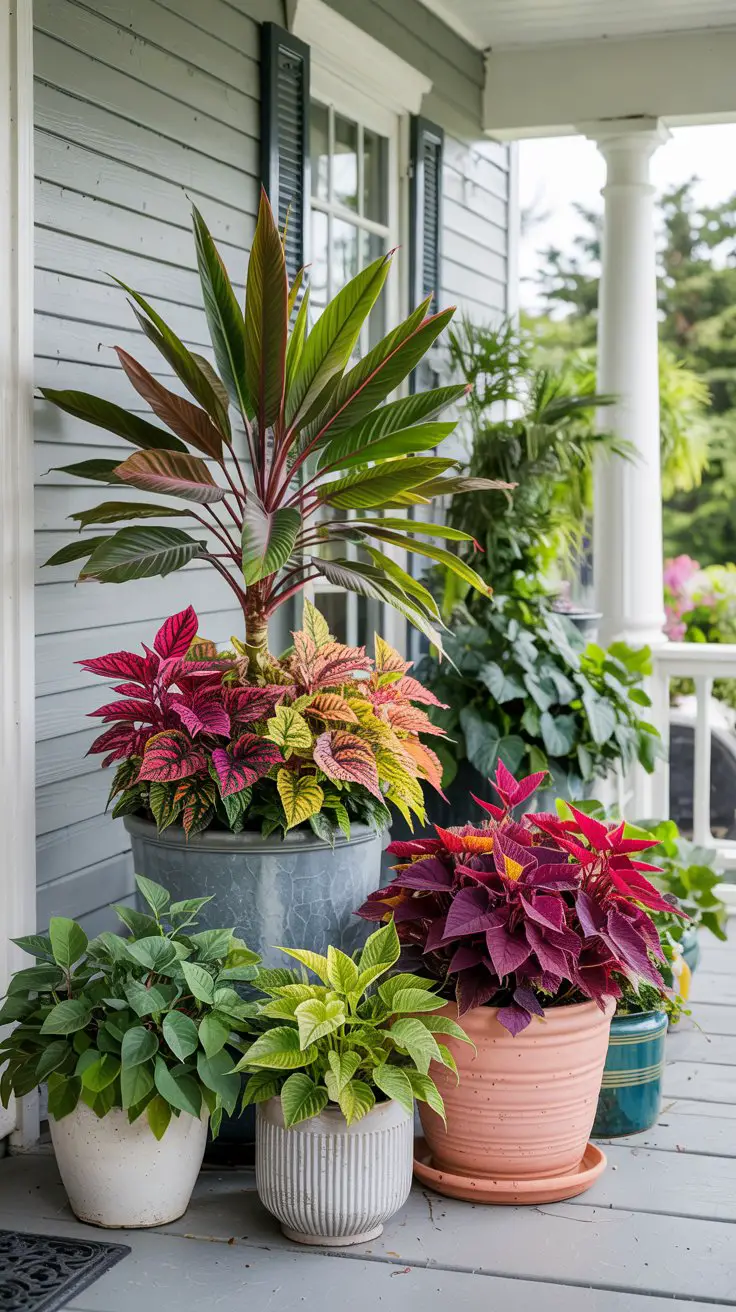
Front Porch Planter Styling Tips
Ready to make your pots pop? Start with the plants themselves. Mix colors and textures. Pair spiky plants with soft, trailing ones. Put dark leaves next to bright flowers. That contrast is visually exciting. It keeps your eye moving.
Then think about the top of the soil. Don’t leave it bare. Add decorative mulch or stones. Bark mulch looks natural. Colored glass or polished river stones add sparkle or texture. It gives a clean finish. It also helps the soil hold moisture.
And think about seasonal accessories. In fall, tuck in mini pumpkins or gourds. For holidays, add ribbons or small ornaments. Little garden stakes or signs can add personality. You can even weave small battery-powered lights into the plants for evening glow.
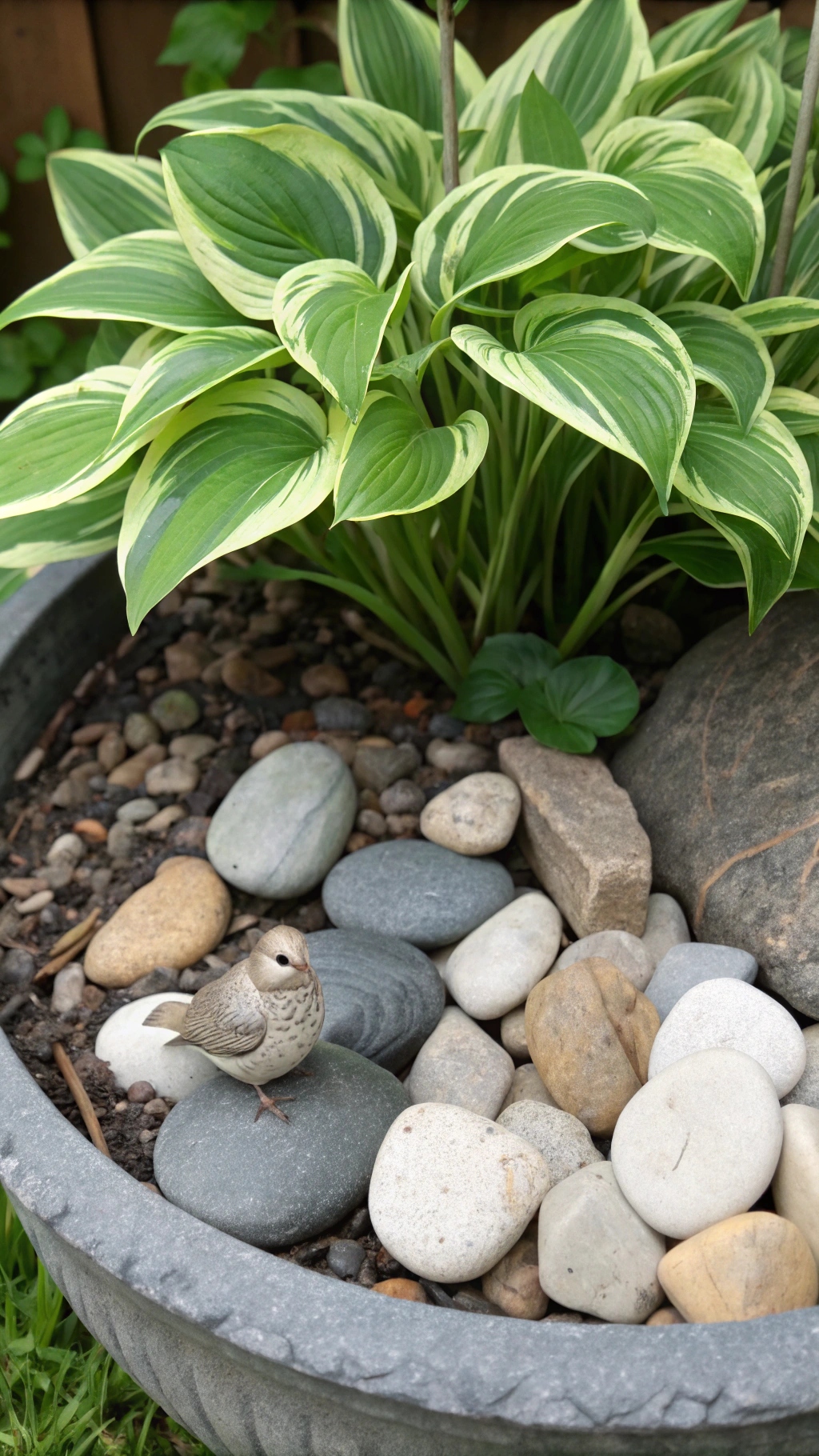
Picture this: A close-up of a planter showing smooth river stones covering the soil, with a small, decorative bird figure nestled among the leaves.
Front Porch Planter Decor
Your planters shouldn’t exist in a bubble. They should work with everything else on your porch. Look at your porch furniture. Is it rustic wood? Modern metal? Pick pots that complement it. Match colors or materials if you like.
Consider your home’s overall style too. A cozy cottage might look good with vintage-style pots. A modern house might need sleek, simple containers. Think about the architectural details of your home. Does it have brick? Siding? Shutters? Choose colors or styles that harmonize with these elements. Everything should feel connected.
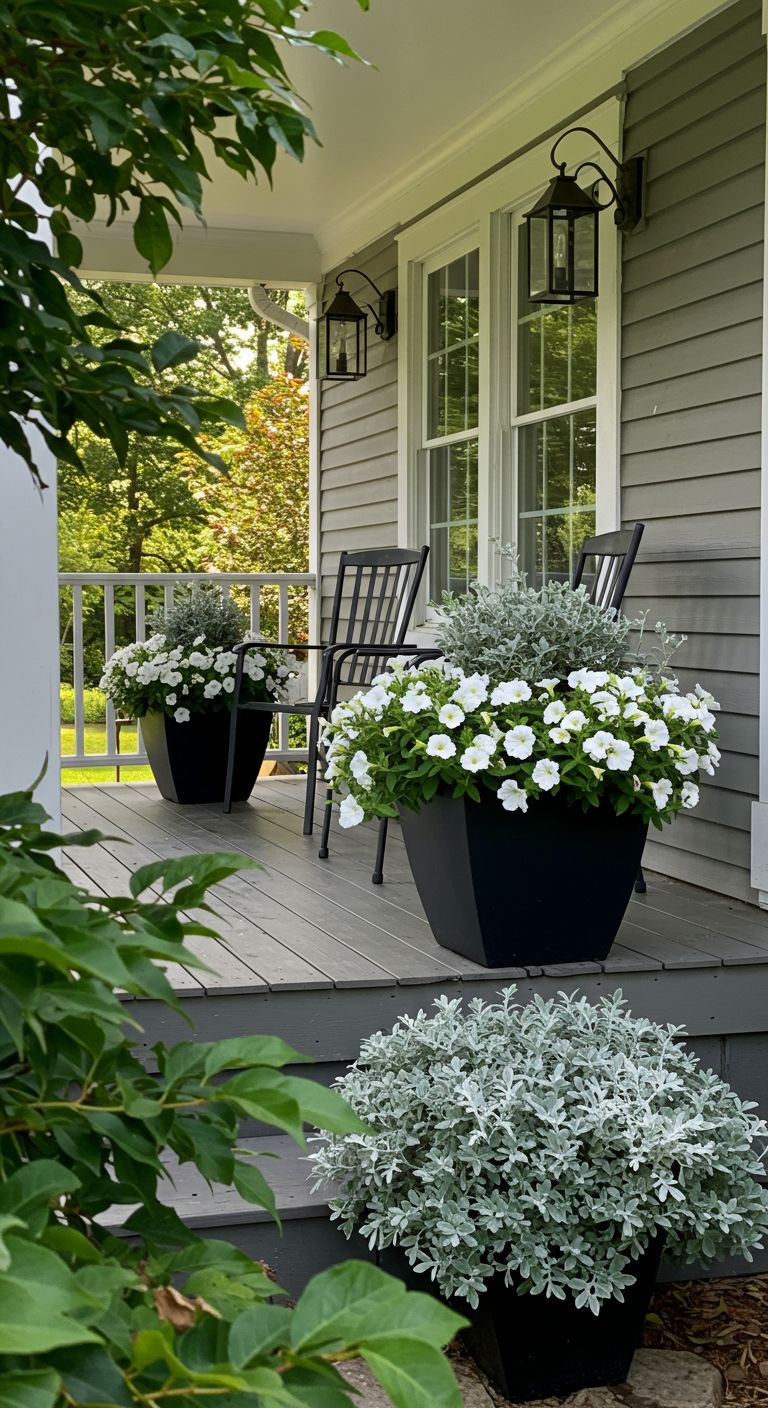
Low-Maintenance Front Porch Planter Ideas
Gardening is fun, but sometimes life is busy. Maybe you travel often. Maybe you just don’t want to water plants every single day. That’s okay! You can still have lovely front porch planters. You just need to choose options that don’t demand constant attention.
Low-maintenance doesn’t mean boring. It just means smart plant choices. Or maybe even no plant choices at all! It’s about finding ways to get the look you want with less effort. It saves you time and worry.
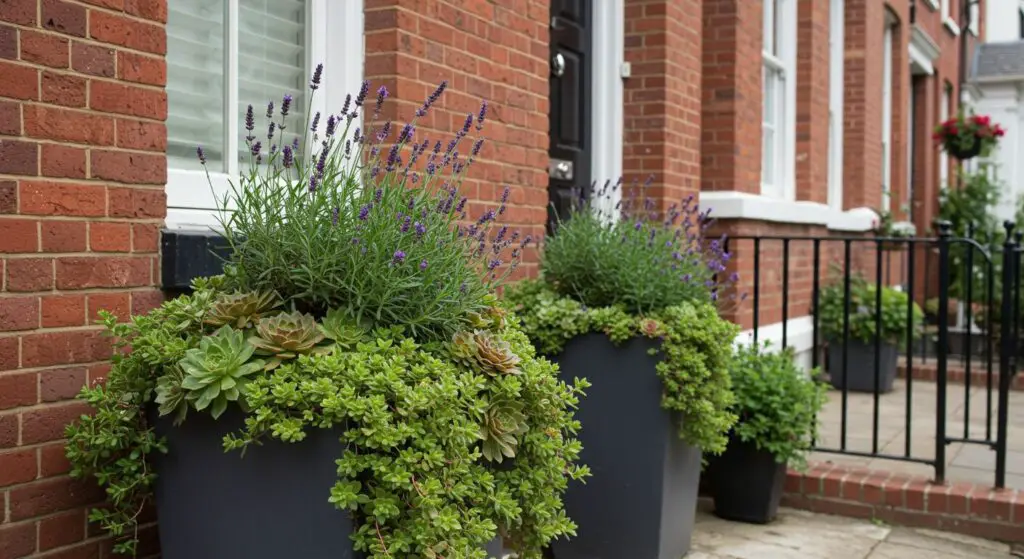
Front Porch Planters Fake Plants
Okay, let’s talk about fake plants. Yes, you can use them in porch planters. They have some big pros. They never need water. They don’t need sunlight. Pests don’t eat them. They look good 24/7, all year round. They are perfect if you are away a lot.
But there are cons. Cheap ones can look obviously fake. They can fade in the sun over time. They collect dust and dirt. If you go this route, choose realistic choices. Look for plants with varied leaf colors and textures. Arrange them naturally. Clean them regularly. Sometimes mixing a few fake plants with real ones in a large display can fool the eye.
If you prefer real plants, choose ones that are tough. Look for drought-resistant plants. Succulents and cacti are famous for this. Many ornamental grasses need little water once established. Some hardy live plants can handle a bit of neglect. Check plant tags for descriptions like “low water” or “drought tolerant.”
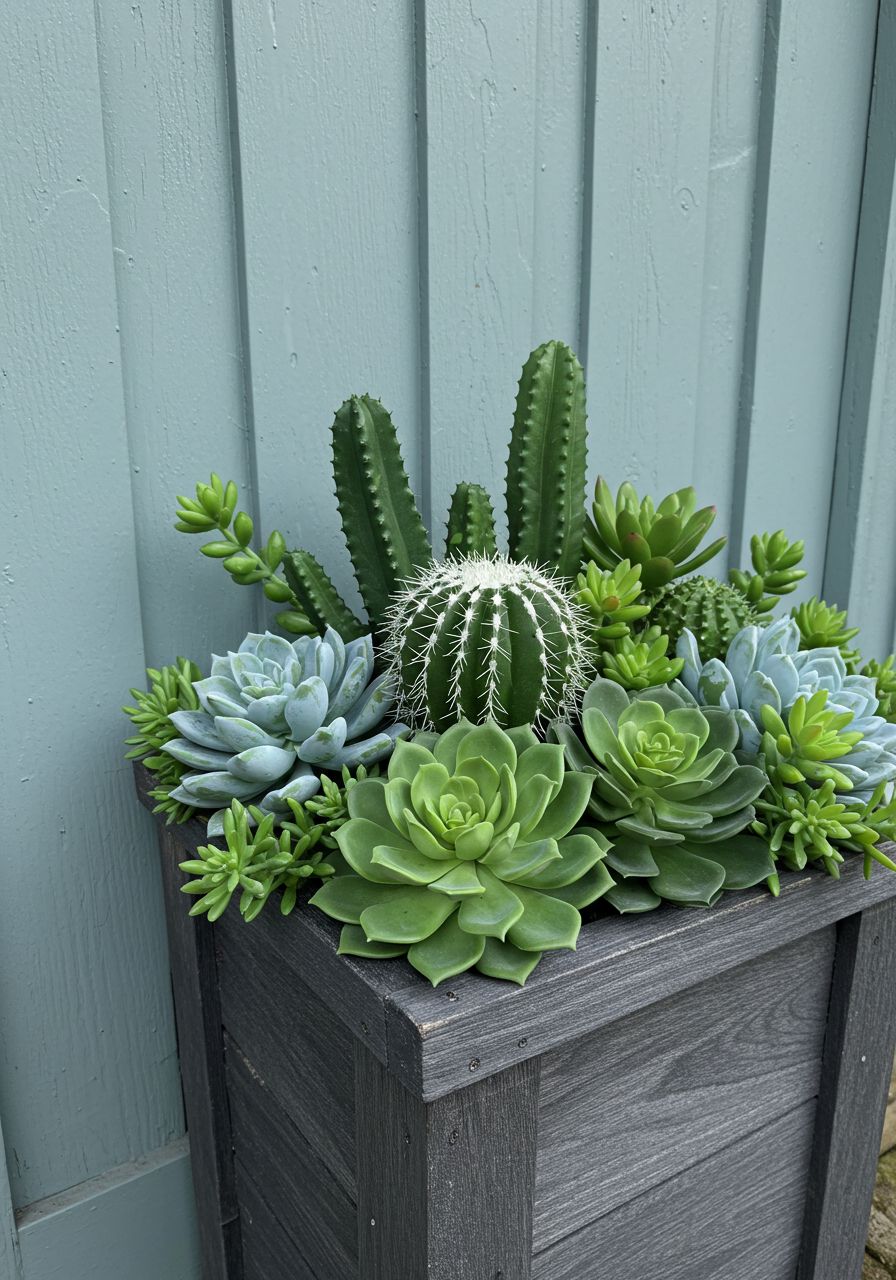
Creative DIY Front Porch Planter Projects
Feeling creative? Want your porch to feel really unique? Making your own front porch planters is a fantastic idea. It lets you put your personal stamp on your space. Plus, it can save you some money. You don’t need fancy tools or materials.
Lots of everyday things can be turned into cool planters. It’s about seeing potential in objects. And it feels good to make something yourself. You can build a simple box. Or you can reuse something old. It’s easier than you think. If you are more adventurous you can try casting your own hypertufa planters.

Front Porch Planters DIY
Let’s try something simple. How about a basic wooden planter box tutorial? You’ll need some wooden boards. Pine is inexpensive. Get them cut to size at the hardware store. Decide how long, wide, and tall you want your box. Cut four pieces for the sides and one for the bottom.
Screw the side pieces together to make a rectangle. Then attach the bottom piece. Drill several drainage holes in the bottom. You can paint or stain it. Or leave the wood natural for a rustic look. That’s it! A simple, sturdy planter box ready to fill.
And what about repurposing old containers? Look around your house or garage. An old metal bucket? A wooden crate? A chipped wheelbarrow? Make sure they are clean. Drill drainage holes if they don’t have them. Paint them bright colors. Or leave them as they are for a vintage vibe. Even old rain boots can become quirky planters.
Want budget-friendly decorating ideas? Use paint to add patterns to plain terracotta pots. Stencil designs on wooden boxes. Tie colorful ribbons around containers. Use natural items like pinecones or seashells as mulch on top of the soil. Simple touches can make a big difference without costing much.
Integrating Front Porch Planters into Landscaping Design
Your porch isn’t separate from your garden. It’s part of the whole picture. Front porch planters can help connect your house to your yard. They can make the edge between your porch and the garden feel smooth. It creates a flowing look.
Think of your planters as a transition zone. They bridge the gap. They can repeat colors or plants you have in your flowerbeds. Or they can introduce new elements that tie everything together. It makes the whole landscape feel more intentional.
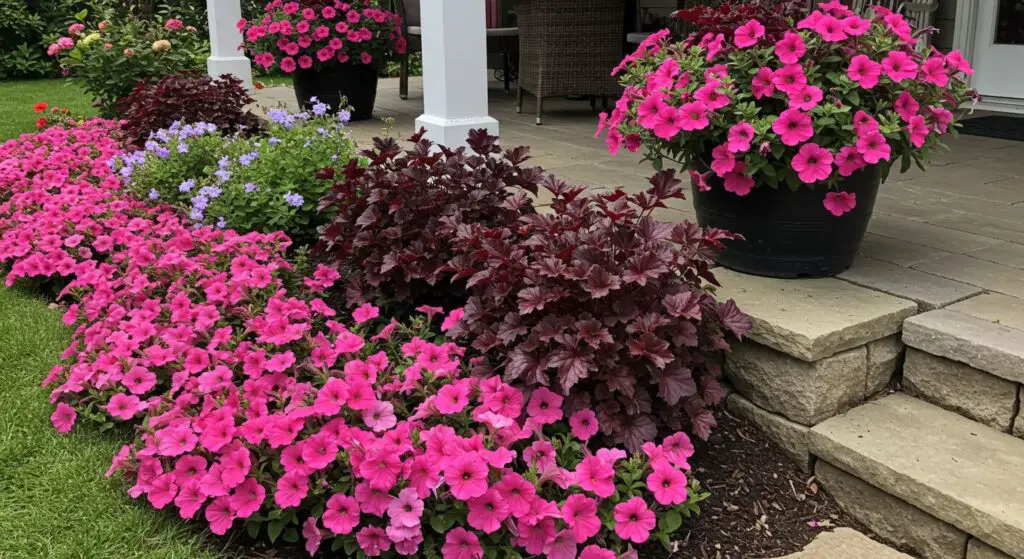
Front Porch Planter Landscaping Ideas
How can you make your planters work with your existing landscape? Use them to complement existing landscape features. Do you have a lot of roses in your garden? Put a few small roses in pots on the porch. Are your garden beds full of colorful annuals? Use the same annuals in your pots. This repeats elements and creates harmony.
You can also combine container plants with flowerbeds or hedges. Place large planters at the edge of a flowerbed. It gives the bed extra height and layers. Put pots in front of a low hedge to break up a long line. It adds interest and depth.
Creating a seamless garden-to-porch transition is the goal. Use planters that match the style of your garden. If your garden is wild and natural, use rustic pots. If it’s formal, use structured containers. Arrange pots stepping down from the porch steps into the garden. This helps the eye move naturally from one area to the other. It makes the whole yard feel connected and complete.

Spotlight on Lavender for Front Porch Planters
Let’s talk about a plant that’s a real star. Lavender. It’s beautiful. It smells amazing. And it looks fantastic in pots on a porch. It brings a touch of the Mediterranean right to your doorstep.
Lavender isn’t just pretty. It’s tough too. It loves sun and doesn’t need constant watering. Plus, that famous scent? Many pests don’t like it. That’s a nice bonus. It’s a plant that gives you a lot for not much fuss.

Picture this: A close-up of fragrant purple lavender spikes swaying gently in a pot on a sunny porch corner.
Front Porch Planters Lavender
Why choose lavender for your porch pots? Its color is a lovely soft purple. It looks great against most house colors. The fragrance is calming and fresh. Just brushing by it releases the scent. It’s a treat for your senses.
And as mentioned, its scent is a natural pest deterrent for some insects. It won’t get rid of everything, but it can help keep annoying bugs away from your porch area.
Ideal growing conditions for lavender? It needs lots of sun. Give it at least six hours daily. It hates wet feet. So, use potting mix that drains very well. Add some sand or grit to the mix if you like. Make sure the pot has big drainage holes. Don’t overwater. Let the soil dry out between waterings. That’s the most important maintenance tip. Trim it back after it flowers to keep it bushy.
What about complementary plant pairings? Lavender looks lovely with other plants that like sunny, dry conditions. Try pairing it with succulents. Or with herbs like rosemary or thyme. Plants with silver or gray foliage look wonderful next to purple lavender. Think about dusty miller or certain sedums. White flowers also pop against the purple.
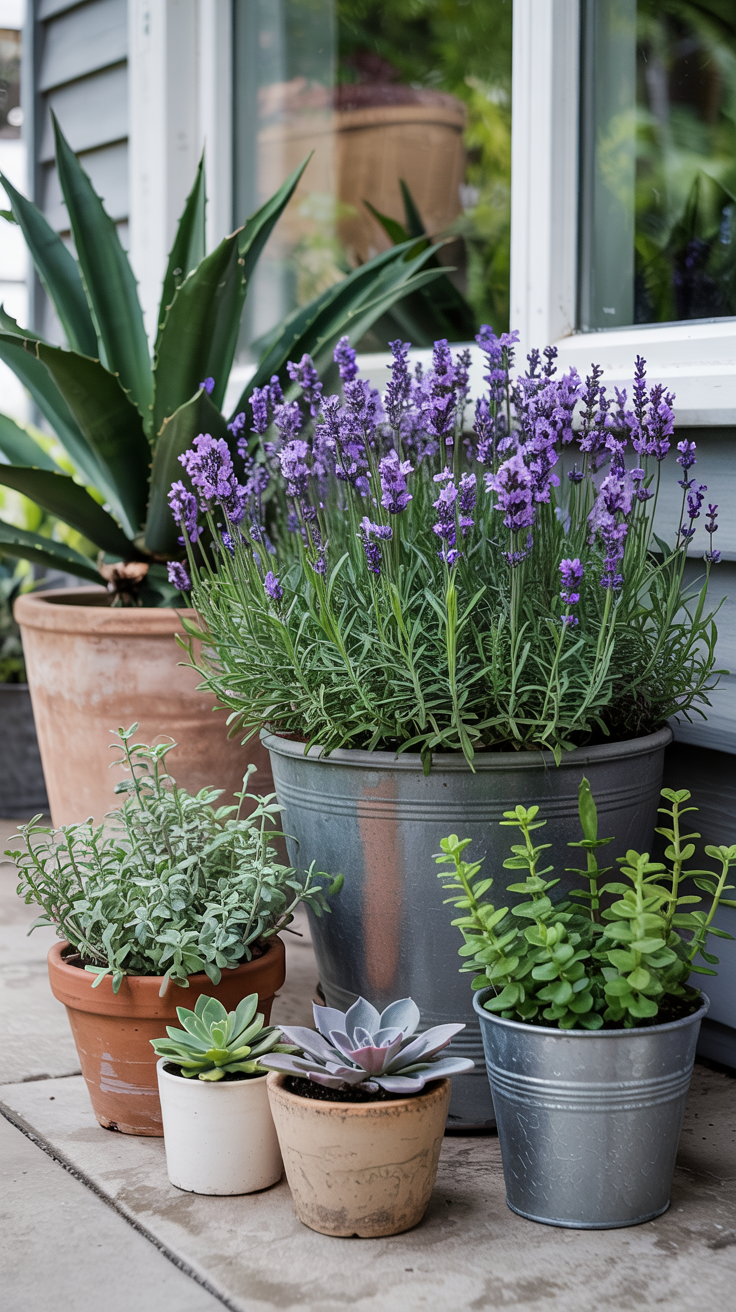
Picture this: A collection of different pots on a porch, with a large pot of purple lavender nestled among smaller pots of silver-leafed plants and low-growing succulents.
Final Thoughts
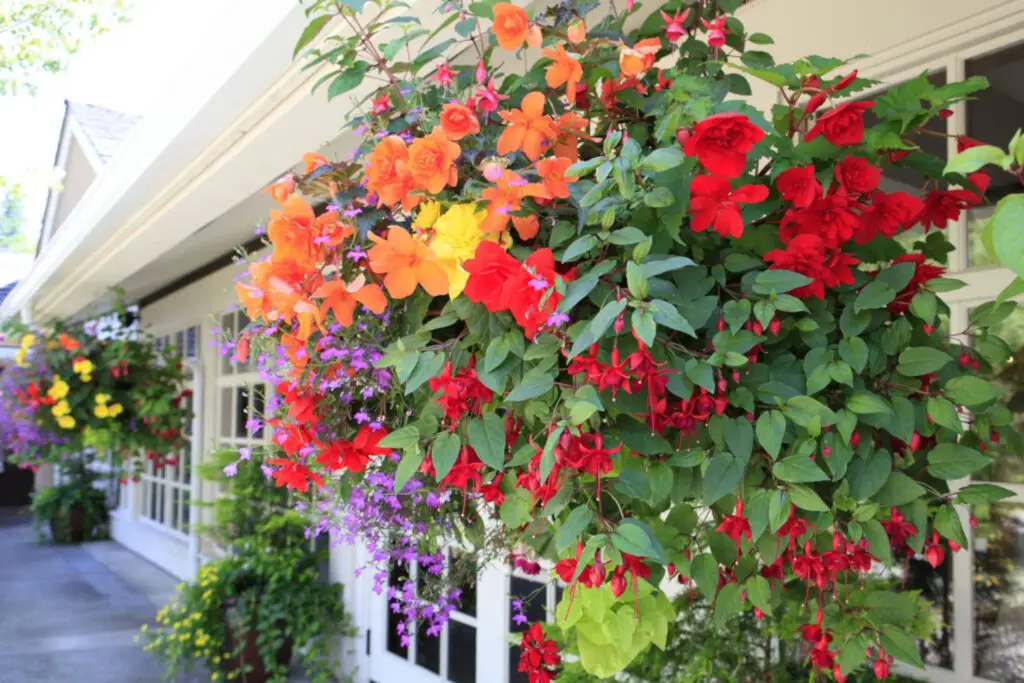
So there you have it. Front porch planters are powerful tools. They transform your home’s entrance. They make it warm and welcoming. And they reflect your personal style. They add life and color right where you need it most.
Planters are flexible too. Change them for the seasons. Pick plants for sun or shade. Go fancy or keep it simple. Get creative and make your own. Or choose low-maintenance options.
The possibilities are endless. Don’t be afraid to try out ideas. See what works best for your porch and your lifestyle. Gardening in pots is forgiving. You can always change things up.
Enjoy the process. Enjoy the beauty. Your porch is waiting for its green makeover. Make it a place you love coming home to. And a place your visitors feel welcome. Happy planting!
